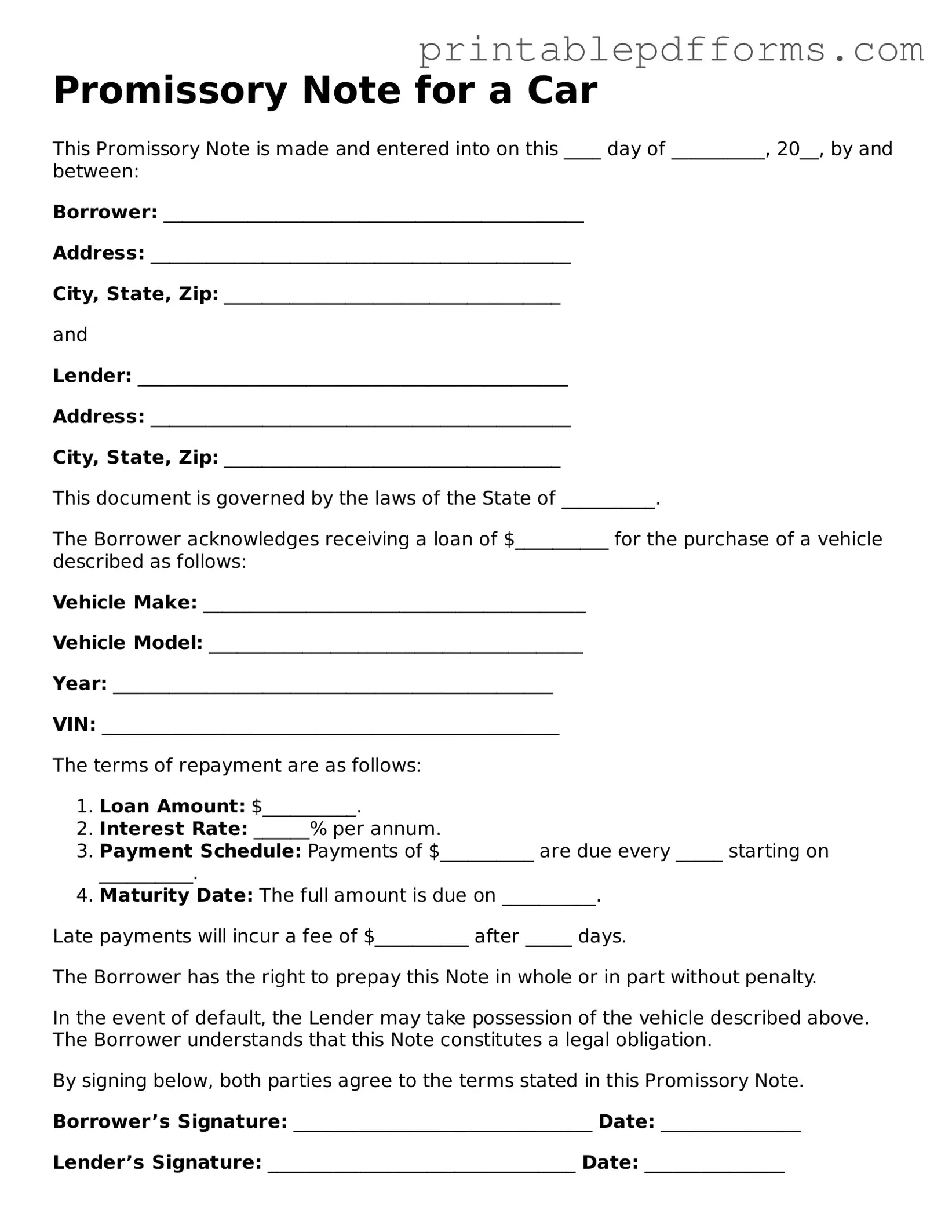Promissory Note for a Car
This Promissory Note is made and entered into on this ____ day of __________, 20__, by and between:
Borrower: _____________________________________________
Address: _____________________________________________
City, State, Zip: ____________________________________
and
Lender: ______________________________________________
Address: _____________________________________________
City, State, Zip: ____________________________________
This document is governed by the laws of the State of __________.
The Borrower acknowledges receiving a loan of $__________ for the purchase of a vehicle described as follows:
Vehicle Make: _________________________________________
Vehicle Model: ________________________________________
Year: _______________________________________________
VIN: _________________________________________________
The terms of repayment are as follows:
- Loan Amount: $__________.
- Interest Rate: ______% per annum.
- Payment Schedule: Payments of $__________ are due every _____ starting on __________.
- Maturity Date: The full amount is due on __________.
Late payments will incur a fee of $__________ after _____ days.
The Borrower has the right to prepay this Note in whole or in part without penalty.
In the event of default, the Lender may take possession of the vehicle described above. The Borrower understands that this Note constitutes a legal obligation.
By signing below, both parties agree to the terms stated in this Promissory Note.
Borrower’s Signature: ________________________________ Date: _______________
Lender’s Signature: _________________________________ Date: _______________
This document serves as a binding agreement. Ensure you keep a copy for your records.
